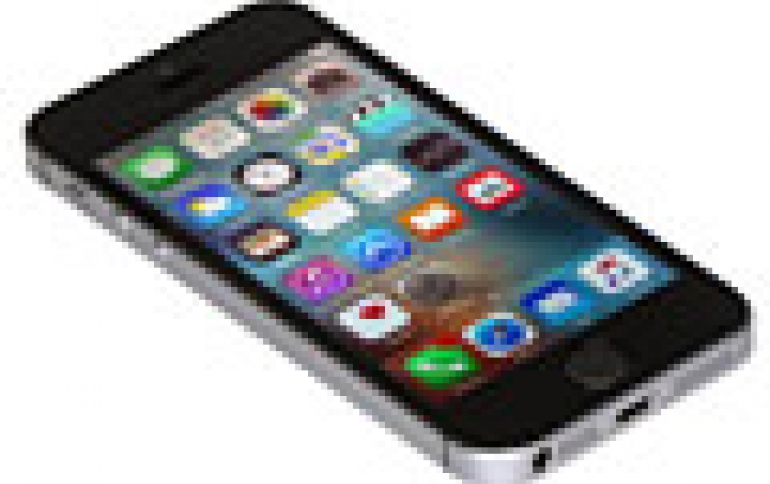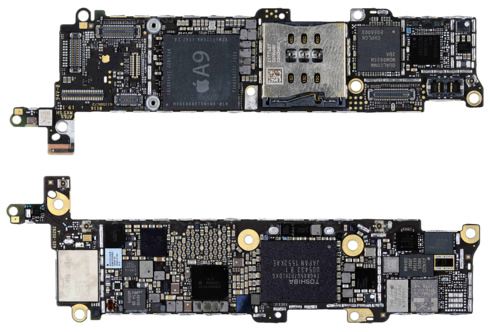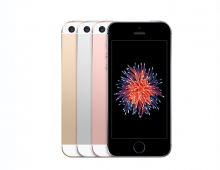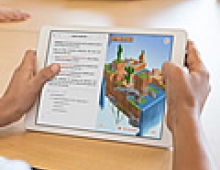
iPhone SE Shares Features And Parts With Three iPhone Generations, Teardown Reveals
The iPhone SE represents an amalgamation of the iPhone 5s, iPhone 6 and iPhone 6s merged into something altogether new, and it costs costs about $160 to build, acording to an estimate by IHS Inc. The U.S. version of an entry-level iPhone SE with 16 gigabytes (GB) of NAND memory carries a bill of materials (BOM) of $156.20, which rises to $160.00 when the manufacturing cost is added, IHS found. The retail price of the iPhone SE 16GB model is $399.
The IHS teardown revealed that the iPhone SE borrows many of the same -- or at least extremely similar -- components from three previous phone generations, as follows:
- iPhone 5s: The overall iPhone SE design envelope is very similar in to the iPhone 5s, which launched in 2013. "The size and resolution of the display are the same between the iPhone SE and iPhone 5, though the mechanical components such as the enclosure have been slightly modified," IHS said.
- iPhone 6:. The iPhone SE shares many of the same radio-frequency (RF) components used for LTE connectivity and uses the same Qualcomm (MDM9625) solution found in the iPhone 6. Depending on the model, the iPhone SE?s cost and performance-optimized RF section supports up to 18 global LTE bands, which is about the same as the iPhone 6 but less than the current 6s. The iPhone SE also shares the iPhone 6 1.2 megapixel secondary camera.
- iPhone 6s: The iPhone SE uses the same A9 applications processor with dynamic random-access memory (DRAM) to support interactive gaming and other processor-intensive applications. The 12 megapixel primary camera module is also the same in both the iPhone SE and the iPhone 6s.
Like with the Apple 5C, Apple is again extending its product range into the lower end of the cost spectrum. The company still aims to get consumers on the lower rung of the Apple-product ladder with the more affordable 16 GB Apple SE, knowing that many consumers will opt to pay for an iPhone with more memory. In fact, IHS estimates that Apple makes approximately $89 in incremental profit for each iPhone SE 64GB sold when compared with the iPhone SE 16GB.

"Apple is willing to drop its gross margin on the low end to induce sales -- though it is likely counting on many consumers upgrading to the more profitable 64 gigabyte SE model," said Wayne Lam, principal analyst, mobile devices and networks, IHS Technology. "When the profit machine that is Apple capitulates to the market forces of a maturing industry, it shows its tacit acknowledgement that even it is not immune to the dynamics of the global smartphone slowdown."
One of the costliest subsystems in the iPhone SE is its four-inch Corning Gorilla Glass display with integrated, in-cell touch sensing; however, the BOM cost of $20 is less than half the cost of the same display in the iPhone 5s, when it was originally released.
Although IHS found an LG Display panel in the iPhone SE in this teardown, Apple also sources iPhone displays from Japan Display and Sharp. On average, 40 percent of iPhone displays are sourced from Japan Display, 35 percent from LG Display and 25 percent from Sharp.
Although Apple is using the same Qualcomm chips as those included in the iPhone 6, most of the supporting front-end and power-amplifier modules (PAMs) in the iPhone SE have been modified and presumably optimized to improve cost and performance. Apple has integrated RF front-end modules in its iPhones to support as many LTE bands as possible into a single iPhone SKU, as it is its goal to support all carriers worldwide with as few physical variations on the hardware as possible.


















